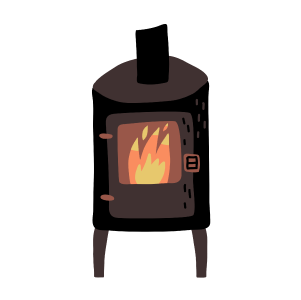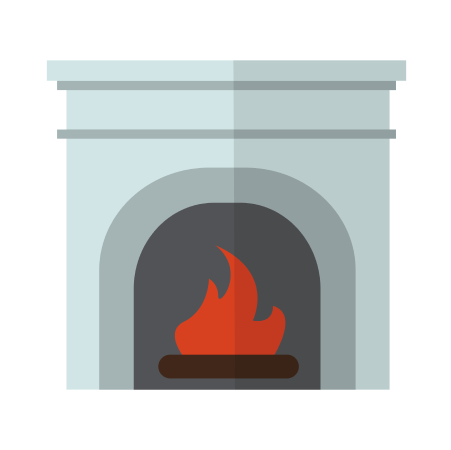
Breathe Easy: Carbon Monoxide Guide
Welcome
👋 Hey there! I have been tasked with helping you and your loved ones stay safe from carbon monoxide. Do you have a minute?
CO Levels Rising
CO levels setups
That’s great. So, let’s say you are at home, just watching TV. There is a storm coming, but you have the heat on and you’re feeling warm and comfortable.
CO Levels Correct
Exactly right! ✅ That’s why carbon monoxide is referred to as the Silent Killer – it’s a deadly gas that can't be seen, tasted or smelled.
CO Levels Incorrect
Unfortunately, this is a misconception! You can’t tell if carbon monoxide is in the air. That’s why it's referred to as the Silent Killer – it’s a deadly gas that can't be seen, tasted or smelled.
Sources Setup
CO is created any time you burn fuel such as natural gas, oil, propane or wood. That can be for heating, like a furnace or wood stove, or for appliances like a gas stove or hot water tank. CO is also found in exhaust fumes from fuel burning vehicles, such as cars and motorcycles, and from fuel burning equipment such as generators and camping stoves.

Sources setup 2
Most of us have at least one source of CO in and around our home – you probably do too!
Common Sources
Glad you asked! Most homes in Canada are heated by:
- furnaces
- wood stoves or wood pellets
- water heaters or boilers
- fireplaces
Other common sources of carbon monoxide include:
- natural gas or propane stoves, dryers and hot water heaters
- fuel-burning generators
- grills and barbecues
- gas powered tools like snow blowers and lawnmowers

Other Sources
Inspection
Amazing!
Amazing!
Booking one ASAP
Symptoms
Correct Symptoms
Yes! ✅ You got it. CO exposure can have immediate and long-term impacts on your health. At low levels, symptoms can look a lot like the flu: tiredness, headaches, muscle weakness and shortness of breath. At high concentrations, exposure can quickly lead to a coma and death.
Incorrect Symptoms
Actually, ALL of them are potential symptoms. At low levels, symptoms of CO poisoning can look a lot like the flu: tiredness, headaches, muscle weakness and shortness of breath.
At increased levels you can feel dizzy or have chest pain. You’ll have trouble thinking clearly and may even lose consciousness. If you don’t get out and get help, you could fall into a coma and die.
Leading Cause
Carbon monoxide is the leading cause of accidental poisoning deaths in North America. If a CO alarm sounds, leave your home immediately and move to fresh air. Do not try to locate the source of the CO. Once outside, call 9-1-1 or you local emergency services. Do not re-enter your home until instructed to do so by a qualified professional.
Pets
Anyone exposed to CO can get sick, even pets. Don’t leave it to chance– get a carbon monoxide alarm. That way you’ll know if you have a problem before it’s too late!
Detection
Correct Detection
👍 Perfect.
Not Sure Detection
It can be hard to tell - CO alarms often look like smoke alarms. You might have both as separate units; or you might have a dual function alarm that will alarm for both smoke and CO.
If you aren’t sure, check the back. If the device detects CO it will be noted. You can also run an online search with the alarms’ model number and manufacturer/brand name to be sure.
Incorrect Detection
Awesome. CO alarms are easy to find online and in stores. Just make sure the one you get is properly certified for use in Canada. Look for one of these marks.

Tested
Have you tested it recently? It is recommended that you test your CO alarm once a month.
Simple tip for not sure
Simple tip: a smoke alarm will beep 3 times in a row, while a CO alarm will make 4 quick beeps. So test it!
Detector buy
You can buy one at: Canadian Tire, Home Depot, Home Hardware, Rona, Lowes
Power
Power Correct
👍 Perfect.
Power Incorrect
With the power out, you might decide to use your camping stove, jet boiler, or barbecue indoors to cook food or heat water - especially if the weather is bad or it’s cold outside.
Bad idea! These aren’t designed to be used inside homes, sheds or garages. They don’t have a way to exhaust to the outdoors, so carbon monoxide levels will rise quickly, even if you open a window or door.
Power - Tip
Remember, reported CO poisonings increase during power outages. So keep fuel burning generators, and outdoor cooking equipment such as barbecues and camping stoves outdoors and away from open windows and doors and air intakes!
Thanks
Alright, thanks for sticking with me!! Accidents can happen, but now you know what to do to protect yourself and your loved ones from carbon monoxide. Always remember:
- Install at least one certified CO alarm with a battery backup in your home. Ideally, CO alarms should be installed in hallways, outside of sleeping areas.
- If a CO alarm sounds, leave your home immediately and move to fresh air. Do not try to locate the source of the CO. Once outside, call 9-1-1 or your local emergency services. Do not re-enter your home until instructed to do so by a qualified professional.
- Never use fuel burning equipment like generators, power tools or barbecues indoors – including the garage
- Have your HVAC system and appliances serviced annually by a qualified technician, to make sure they are working efficiently and venting properly
- Recognize the signs of CO poisoning, and seek medical attention if you think you have been exposed
Add to Calendar
Storm - Image
Share this guide
Learn more about improving your indoor air quality through ventilation. And please share this guide with others! Reducing the risk of exposure to CO could help save a life.
Smoke Alarm image
If a CO alarm sounds
If a CO alarm sounds, leave your home immediately and move to fresh air. Do not try to locate the source of the CO. Once outside, call 9-1-1 or your local emergency services. Do not re-enter your home until instructed to do so by a qualified professional.
Power - I hate the dark
With the power out, you might want to use a back-up generator to provide an alternate source of power.
You might be tempted to use your generator indoors- in your home, garage or shed or even close by, like under a covered porch or awning.
Bad idea! Using generators indoors or close to buildings can quickly expose you to dangerous levels of CO, even if you open a window, door or overhead garage door.
Always use your generator outdoors and away from buildings!
